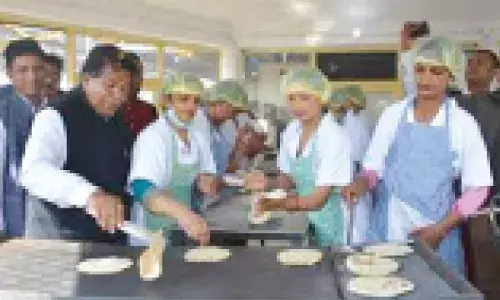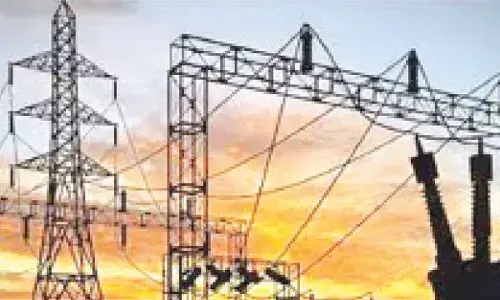Will global inflation increase poverty level in India?

UN report says India may remain largely untouched by the global spurt in inflation which could push nearly 71 mn people into poverty around the world
India may remain largely untouched by the global spurt in inflation which could push nearly 71 million people into poverty around the world. This is the assessment of a survey carried out by the UN Development Programme (UNDP) to find out the impact of rising food and energy prices in the wake of the Ukraine conflict and the resulting disruption in supply chains. It says countries around the Caspian Basin, the Balkans and sub-Saharan Africa will be most affected by the crisis.
The survey comments that the low income population in this country is negligibly vulnerable to slipping into poverty as a result of inflation having peaked around the world. Finance Minister Nirmala Sitharaman attributes this to the targeted food and cash transfers that have been made to weaker sections of society right from the beginning of the pandemic. The survey which has been titled "Addressing the Cost of Living Crisis in Developing countries" has advocated targeted and time bound cash transfers as an effective tool. For Pakistan and Sri Lanka, however, it has projected that three per cent of their population could fall into extreme poverty.
The survey results come just as June data has been released showing that headline inflation has eased to 7.01 per cent from 7.04 per cent in May. But it is still well beyond the tolerance band of 2 to 6 per cent fixed by the Reserve Bank of India and remains at worrying levels. At the same time, it is indeed a unique phenomena that inflation in this country has remained lower in recent times than in many developed countries where it normally ranges in the one to two per cent band. The US, for instance, is having to cope with inflation at a four decade high of 9.1 per cent giving a sharp impetus to the Federal Reserve to raise interest rates aggressively.
The UK is similarly witnessing inflation at around 9 per cent while the European Union has recorded 8.8 per cent. The country with the highest inflation in the Europe is currently Estonia which touched a peak of 20 per cent. Other Baltic countries also have high inflation while the Ukraine and Russia which are involved in a conflict have inflation at 18 and 17 per cent respectively.
For European countries, the major cause is the higher cost of energy as well as supply chain disruptions owing to the Ukraine war. These countries rely for much of their fuel supplies on Russia and are now struggling to cope with the prospect of oil and gas shortages as well as higher prices.
In contrast, therefore, inflationary pressures have been contained more effectively in this country even though these continue to be a serious concern for policymakers. One of the major reasons for rising prices has been the impact of higher global crude oil rates which had shot up after Russia invaded the Ukraine. The pass-through effect of enhanced world prices into retail markets as well as the burden of heavy taxation on petroleum products has given a big push to inflation in recent months. Food inflation has also risen but June data shows there is a marginal decline. Recent cuts in excise duties on oil products and the curbs on food exports could be responsible for the slight dip in headline inflation during the month.
In the backdrop of the UNDP survey, however, it is evident that the recent developments related to the Ukraine crisis and resulting spike in commodity prices would not have the same impact of pushing more low income people into poverty as in other parts of the world. Yet it must be recognized that during the pandemic years of 2020 and 2021, a large segment of the population did face acute economic distress.
This is despite the targeted support given through cash transfers and more importantly, by provision of free foodgrains. Loss of employment due to repeated lockdowns did result in many households falling below the poverty line during these two years.
In this context, the former Chief Economic Advisor, Krishnamurthy Subramaniam has commented that India would have witnessed 18 to 20 per cent inflation if it had adopted policies resorted to by advanced countries in the wake of the Covid crisis. Or, he added, even if it had followed its own policies carried out after the 2008 financial crisis.
As for the UNDP survey, it has actually been carried out over a period when economic recovery has been taking place and employment in both urban and rural areas has been returning to pre-pandemic levels. In fact, despite rising inflation, other economic indicators are showing an upswing. This includes the index of industrial production which rose to 19.6 per cent in May from 7.1 per cent in April. This is the highest growth in the past year. It has been aided by a low base effect as May 2021 was affected by the second Covid wave. There were curbs on movement at the time leading to fall in factory activity. Even so, there has been a sharp uptick from April and the IIP is now 1.7 per cent higher than in May 2019.
Besides, the robust growth in exports is helping to propel industrial output while the supply chain disruptions of the past few months have also eased considerably. Rising costs may temper demand but factory output is expected to continue expanding till the festival season. With the monsoon having been normal so far and excessive in many parts of the country, the outlook is bright for the kharif harvest. Expectations are that demand will rise considerably during the festival season.
The economy continues to face challenges owing to slowing global growth and imported inflation. Yet it has managed to avert the scenario of soaring inflation that has hit many developed countries. The coming months, however, will confirm whether the declining trend of prices will be sustained throughout the year.














